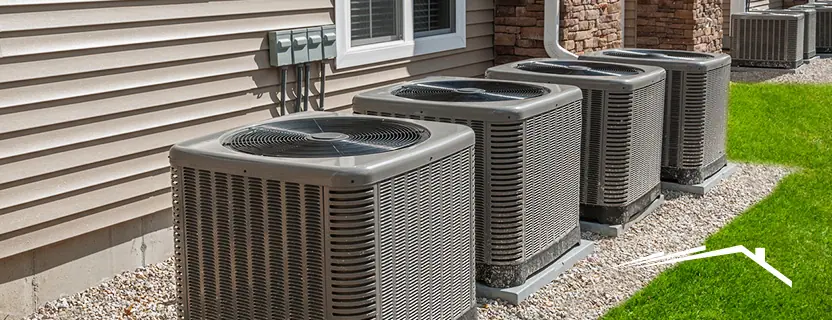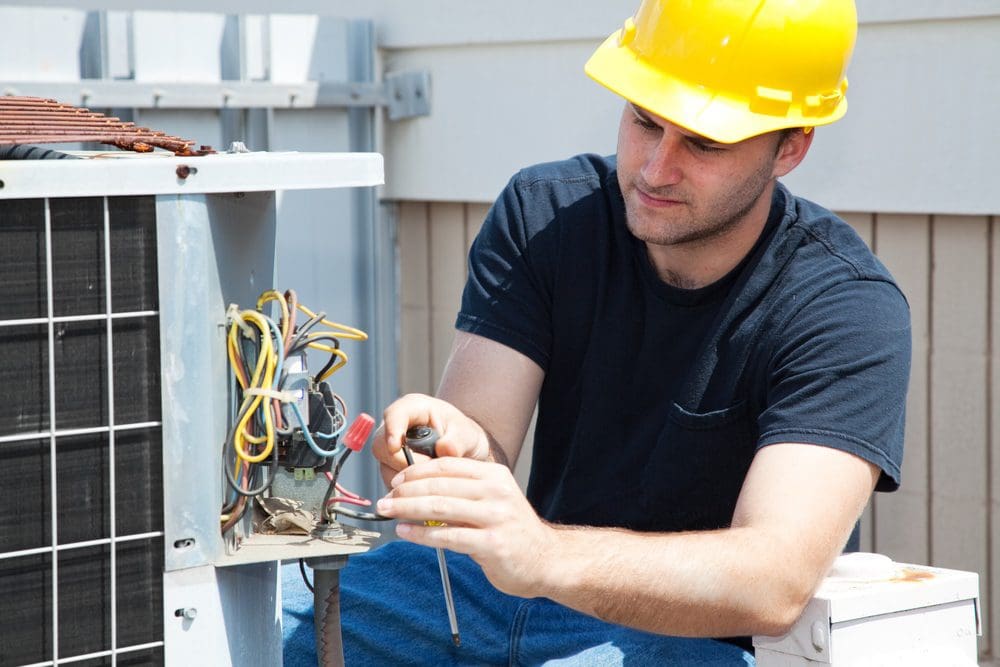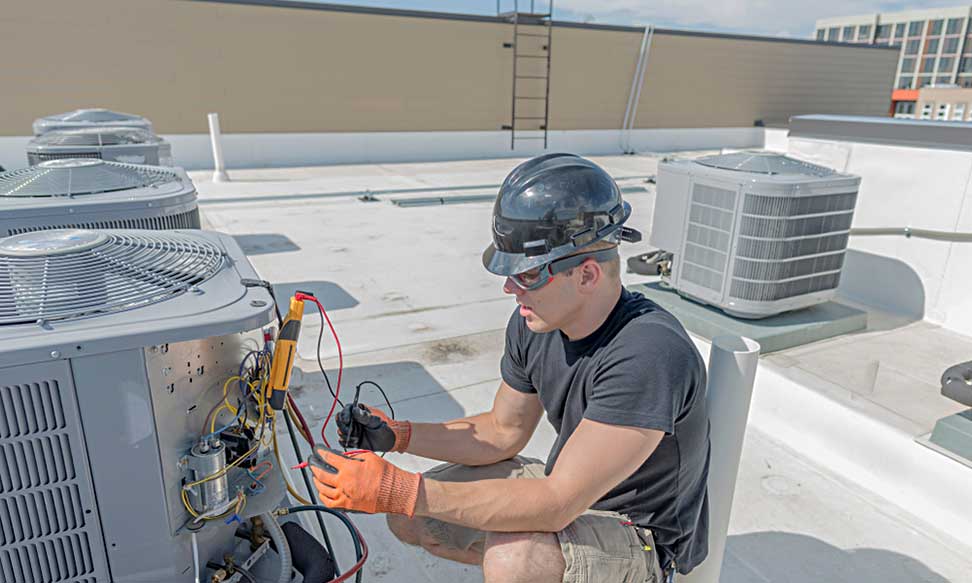Exactly How a Warm Pump and Heating System Work With Each Other to Enhance Your Home's Heating Performance
Understanding exactly how a heatpump and heating system interact is vital for house owners looking for efficient heating remedies. Each system has its staminas, giving a balanced method to home comfort. The heatpump excels in modest temperature levels, while the furnace delivers rapid heat throughout severe cold. This synergy not just reduces power prices however also improves the lifespan of both appliances. What factors influence this collaboration, and just how can home owners maximize their advantages?
Understanding Warm Pumps: Just How They Work
Lots of people may be unfamiliar with their inner workings, warm pumps play a vital role in modern heating systems. These gadgets run by moving warmth from one location to an additional, making use of the principles of thermodynamics. In colder months, a heat pump extracts warmth from the outdoors air, ground, or water, and transfers it indoors to heat the living area. Conversely, during warmer months, it can turn around the process, serving as an a/c by getting rid of warm from inside to the outside.Heat pumps contain an evaporator, condenser, compressor, and expansion valve. The cooling agent within the system absorbs warm as it vaporizes at reduced temperatures and stress. The compressor then increases the pressure and temperature level of the cooling agent, allowing it to launch heat as it condenses. This effective process can significantly minimize energy consumption contrasted to standard heating methods, making warm pumps a sustainable choice for climate control in homes.
The Role of Heating Systems in Home Heating
Heating systems play an important function in home heating by supplying a reputable resource of heat throughout the chillier months. They run by producing heat via burning or electric resistance, distributing it throughout the home via air ducts or glowing systems. The effectiveness of a heater is frequently determined by its Annual Gas Usage Efficiency (AFUE) rating, which suggests just how successfully the device converts gas right into heat.Furnaces can make use of various energy sources, including gas, propane, power, or oil, permitting homeowners to choose the most ideal option for their requirements. Unlike heatpump, which might have a hard time in severe chilly, furnaces preserve consistent efficiency, making certain that interior temperatures remain comfortable despite outdoor problems. In addition, modern furnaces frequently come outfitted with advanced modern technology, such as variable-speed blowers and clever thermostats, boosting their efficiency and responsiveness. This flexibility makes furnaces an important part in all-inclusive home heating strategies.

Benefits of Using Both Systems Together
Combining the toughness of both furnaces and heatpump can cause a much more efficient and reliable home heating remedy. Making use of both systems allows home owners to take benefit of the heatpump's energy effectiveness during milder temperature levels while counting on the heating system for more severe cold problems. This dual approach can significantly lower power prices, as heatpump eat less power than typical home heating methods when temperature levels are moderate.Additionally, utilizing both systems together can improve convenience levels in the home. Warm pumps can offer consistent, also heating, while furnaces can rapidly elevate ambient temperatures when needed. Additionally, the assimilation of both systems can prolong the lifespan of tools by lowering wear and tear on each unit, as they share the workload. Eventually, homeowners can delight in a balanced, affordable home heating service that readjusts flawlessly to varying weather, making sure a cozy and inviting home throughout the wintertime months.
How Warmth Pumps and Furnaces Complement Each Various Other
They develop a corresponding home heating system that maximizes performance and convenience when house owners incorporate warm pumps and heaters. Heat pumps run by moving heat from the outside air or ground, making them very reliable in moderate climates. They excel during milder temperatures, giving economical home heating. Conversely, heating systems generate warm through combustion or electric resistance, providing strong, prompt warmth throughout extreme cool conditions.The mix of these two systems enables dynamic adjustments based on temperature level variations. Throughout warmer months or milder winter season days, the heatpump can take the lead, preserving power and minimizing costs. As temperatures drop, the furnace can seamlessly engage, making sure consistent warmth throughout the home. This harmony not just maximizes energy use yet also boosts the lifespan of both systems, as each system operates within its perfect efficiency variety. Together, they develop a balanced atmosphere that adapts to differing environment needs.
Enhancing Effectiveness: Tips for Homeowners
House owners can improve their heating performance via numerous functional techniques. Establishing a routine maintenance timetable, integrating clever thermostat technology, and implementing efficient insulation and sealing services are key steps. These measures not only enhance comfort yet likewise lower power costs.
Normal Upkeep Set Up
To assure maximum heating efficiency, developing a regular upkeep routine is crucial for any kind of home. Homeowners ought to prioritize regular examinations of both warmth pumps and heaters to establish peak efficiency. This consists of transforming air filters every one to three months, as stopped up filters can considerably decrease performance. Furthermore, scheduling expert upkeep a minimum of annually permits service technicians to identify and attend to potential problems prior to they rise. House owners need to likewise clean up the heatpump's outdoor system to prevent debris accumulation that can impede air flow. By adhering to a routine maintenance routine, house owners not just improve their heating unit' effectiveness however additionally prolong their life expectancy, bring about better convenience and lowered power prices throughout the cooler months.
Smart Thermostat Integration
Incorporating a clever thermostat right into a home heating unit can significantly enhance power effectiveness, particularly as it enables accurate control over temperature level settings. These devices can find out the house owner's schedule and choices, immediately adjusting the temperature level to optimize convenience while lessening energy usage. They can decrease heating throughout times when the home is unoccupied, lowering unnecessary intake. Numerous clever thermostats also give real-time energy use data, making it possible for property owners to make enlightened decisions concerning their heating routines. Additionally, remote gain access to using mobile phone applications allows individuals to readjust settings from anywhere, making sure the home is cozy upon return. Generally, smart thermostat combination not just boosts convenience but significantly adds to energy cost savings and effectiveness.
Insulation and Sealing Solutions
Smart thermostats play an essential duty in energy efficiency, but their efficiency can be considerably enhanced by proper insulation and sealing options. Homeowners must focus on insulating walls, floors, and attics to lessen warm loss. High-quality insulation materials, such as spray foam view publisher site or fiberglass, can significantly enhance thermal resistance. Furthermore, securing spaces around windows, ducts, and doors protects against cool air seepage and warm getaway. Weatherstripping and caulking are efficient techniques for attending to these leaks - ductless mini splits. Regular inspections for air leakages, together with the use of blower door tests, can help recognize trouble locations. By investing in insulation and sealing, home owners can enhance the performance of their home heating systems, ultimately causing reduced energy consumption and reduced energy bills
Common Misconceptions Concerning Heat Pumps and Furnaces
What misunderstandings surround heatpump and heaters? Lots of individuals mistakenly think that heatpump are ineffective in cooler climates. Actually, modern-day warm pumps are designed to run effectively also in low temperatures, giving trustworthy heating throughout winter. An additional common misconception is that heating systems are always extra effective than warmth pumps. This depends on the specific power resources and effectiveness rankings of the units in inquiry. Some may likewise assume that utilizing both systems simultaneously is unneeded, yet as a matter of fact, this mix can optimize heating performance, particularly throughout severe weather. In addition, people often assume that heat pumps call for constant maintenance, when in reality, they have comparable maintenance needs to conventional furnace. By exposing these misconceptions, homeowners can make more enlightened choices regarding their heating alternatives, ultimately leading to boosted convenience and power effectiveness in their homes.
Maintenance Factors To Consider for Combined Systems

Often Asked Inquiries
Can Heat Pumps Work Successfully in Extremely Cold Climates?
Heat pumps can have a hard time in exceptionally cold climates because of minimized performance and warmth extraction limitations. Nevertheless, improvements in modern technology have actually led to models developed for much better efficiency in such problems, boosting their stability in harsh environments.
How Lengthy Do Warmth Pumps and Furnaces Typically Last?
Heatpump commonly last 15 to twenty years, while furnaces have a lifespan of 15 to 30 years. Normal upkeep can expand their durability, making sure effective operation and lowering the need for premature replacements.

What Is the Average Expense of Installing Both Solutions?
The ordinary cost of setting up both a warmth pump and a heater generally varies in between $5,000 to $10,000 - heat pump installation ooltewah tn. Elements affecting this cost include system dimension, installment intricacy, and local labor prices
Are There Tax Rewards for Utilizing Energy-Efficient Home Heating Systems?
Lots of property owners ask about tax rewards for energy-efficient home heating systems. Various federal and state programs commonly supply rebates or credit histories, urging the fostering of lasting technologies to decrease energy usage and advertise ecological duty.
Just how Do I Pick the Right Dimension Warmth Pump and Furnace?
Choosing the best size heat pump and furnace includes determining the home's square video footage, thinking about insulation high quality, and examining neighborhood environment. Consulting an expert can ensure ideal system performance and energy performance based upon details demands. heat pump installation ooltewah tn. Recognizing just how a warmth pump and heating system job with each other is important for property owners seeking efficient home heating remedies. In chillier months, a warm pump extracts warmth from the outdoors air, ground, or water, and transfers it inside your home to warm the living space. When home owners incorporate warm pumps and furnaces, they develop a corresponding heating system that takes full advantage of efficiency and comfort. Heat look at this now pumps run by transferring warmth from the outdoors air or ground, making them highly efficient in modest climates. Warmth pumps can have a hard time in incredibly Get More Info cold environments due to reduced effectiveness and heat removal constraints